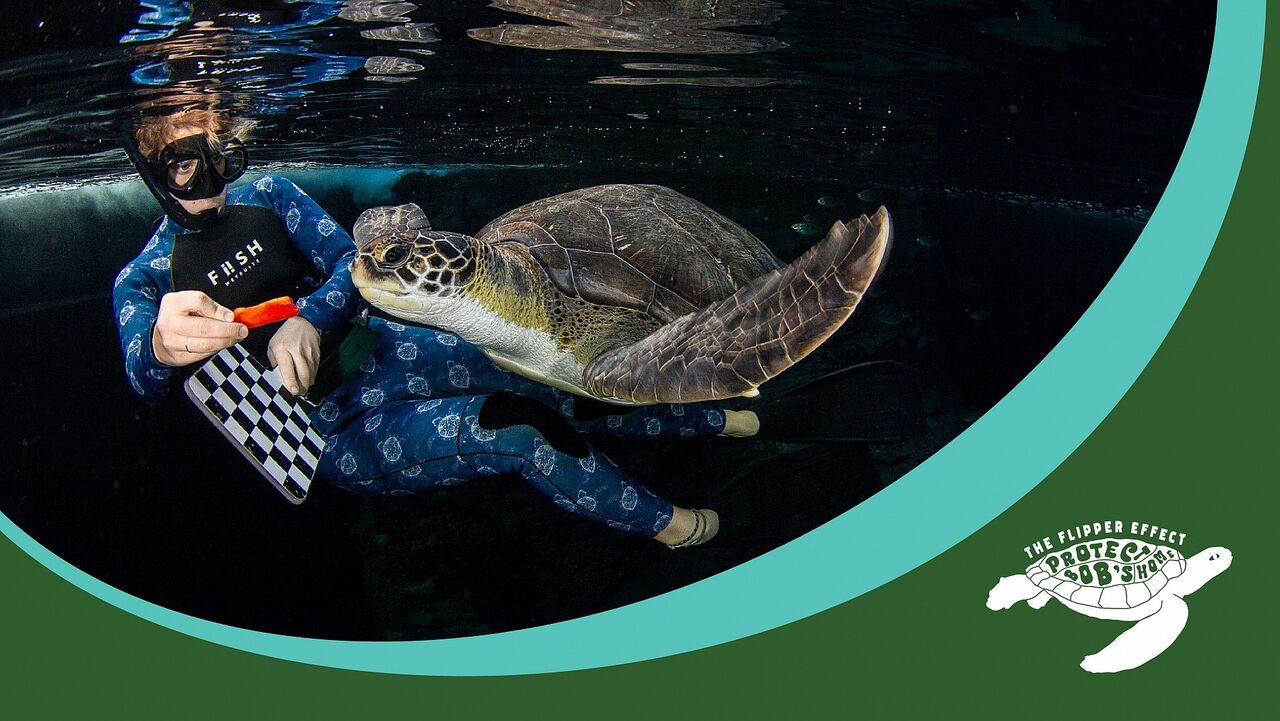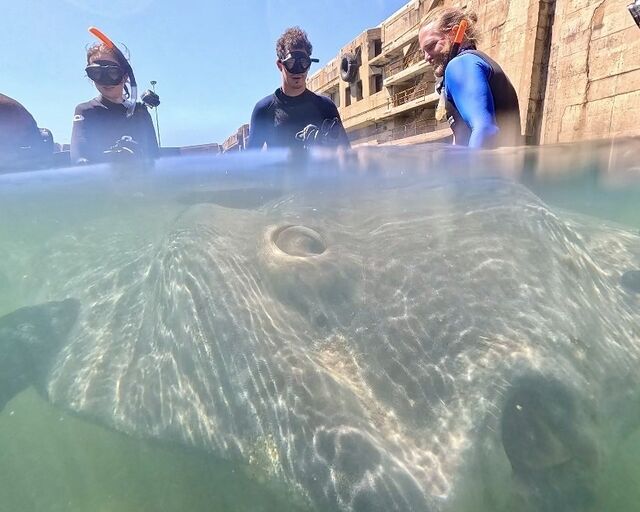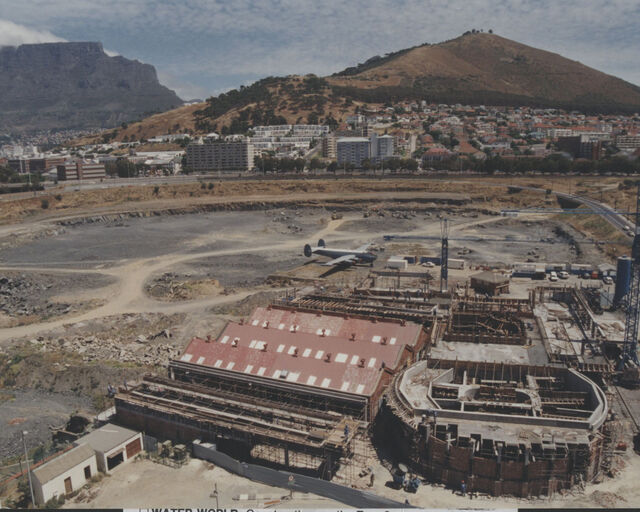This blog is part of a series about Bob, written by the Two Oceans Aquarium Foundation's turtle conservation team, with the hopes that it motivates Bob-lovers to help us protect our oceans for all turtles. Learn more about this campaign at the bottom of this blog - The Flipper Effect: #ProtectBobsHome.
Rescued green turtle Bob has been in rehabilitation for eight years - but that might be about to change!
If you read our previous Bob blog, you got to know our special ocean ambassador Bob, and the incredible journey he has been through. You would have also read a little about environmental enrichment and how that was one of the key tools to help Bob get release-ready! But what is environmental enrichment?
Credit: Justin Blake
A blog titled “Training Bob to be release ready” was published a while back which explains more simply what enrichment is and what Bob's enrichment and daily programme look like (So check that out if you have not already). In this blog, we are going to dive a bit deeper and get a little more technical as we explore the magic tool that is enrichment! So, let's dive in!
What is environmental enrichment?
Environmental enrichment is defined by the Association of Zoos and Aquariums (AZA) Behaviour Scientific Advisory Group as “a dynamic process for enhancing animal environments within the context of the animal's behavioural biology and natural history. Environmental changes are made with the goal of increasing the animal's behavioural choices and drawing out their species-appropriate behaviours, thus enhancing animal welfare.” In simpler terms: environmental enrichment is the use of different devices and activities that create challenges and stimulate species-specific behaviours in individuals.
Environmental enrichment is not a new concept, in fact, it became a priority to many zoos and aquaria after the Animal Welfare Act was passed in 1985, which introduced the concept of psychological well-being in animals. While it is well documented that environmental enrichment improves the welfare of captive animals, its use as a rehabilitation and rewilding tool has not been deeply investigated.
There are many different types of enrichment and multiple ways to categorise them. The most common consensus is that there are six types of environmental enrichment: Feeding Enrichment, Sensory Enrichment, Social Enrichment, Cognitive Enrichment, Physical Enrichment, and Structural Enrichment.
How it has helped Bob get release-ready?
Bob's intense environmental enrichment programme has assisted in getting him release-ready! How? By creating challenges and stimulation so that Bob can explore, discover, work and ultimately express species-specific behaviours needed for him to survive and thrive in the wild! Bob now exhibits feeding aggression, territorial behaviours, resting at the bottom of his housing, exploratory swimming, space and depth perception, and healthy neurological responses.
One small step for Bob, one giant leap for sea turtle rehabilitation!
Sea turtles play vital roles in terms of ecological functions and human welfare, but despite their great significance, they are not immune to the impacts of anthropogenic and global change stressors and threats. Thus, we must do everything we can to help them survive and thrive. Sea turtle rescue and rehabilitation centres play an important role when it comes to the preservation of sea turtles. The sea turtles that end up at the Two Oceans Aquarium Foundation rescue and rehabilitation centre have faced various traumas and often have “lost” certain natural behaviours as a result of their injuries and/or time in human care (due to needing medical care and rehabilitation). This is where enrichment comes in - playing a crucial role in their recovery and release success.
Credit: Justin Blake
Bob's successful rehabilitation journey with the help of environmental enrichment has shown us how using different types of enrichment can improve overall sea turtle health and welfare, and more importantly how it can help compromised sea turtles regain natural species-specific behaviours necessary for them to be able to be released back home and survive in their natural habitat.
Currently, research is being done in investigating the effectiveness of environmental enrichment on sea turtles and we are hoping that this research will not only help us better understand sea turtle behaviours and marine reptile welfare overall in order to help improve conservation efforts all around the world, but also to also provide a creative and efficient rehab tool to increase release success for sea turtles, and perhaps wildlife globally!
Bob navigates a maze to find food, and an enrichment activity intended to stimulate a natural foraging behaviour.
The Flipper Effect: Protect Bob's Home
Bob is at the brink of release back into the borderless wilds of the open ocean after eight years of difficult rehabilitation. As we are preparing to release him, we realise we won't be able to protect him anymore.
The reality is simple: The ocean is not safe for turtles.
Together we can change that. Bob will be facing many of the same human-caused threats that resulted in his stranding in the first place, and which are the cause of harm to the overwhelming majority of distressed sea turtles - plastic pollution, habitat destruction, careless use of fishing equipment.
In order to create an ocean that is safe for Bob and all other creatures that call it home, we must continuously take small actions towards protecting it - these small actions compound into big change. This is #TheFlipperEffect!
Related News
Sign up to our Newsletter
Receive monthly news, online courses and conservation programmes.





